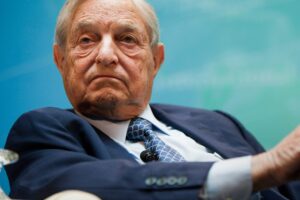In the annals of financial history, certain events stand out as remarkable turning points, shaping the world of global finance. “Black Wednesday” is one such event, a day when the Bank of England’s resolve collided head-on with the financial acumen of a single individual, George Soros. September 16, 1992, marked a day of unprecedented market turmoil, leading to Soros’s legendary billion-dollar profit. In this article, we delve into the dramatic events of Black Wednesday, exploring the factors that led to Soros’s historic trade and the enduring impact it had on the financial world.
Setting the Stage
In the late 1980s and early 1990s, the United Kingdom was a member of the European Exchange Rate Mechanism (ERM), a system designed to stabilize exchange rates between European currencies before the euro was introduced. The ERM was the backdrop against which this financial drama played out. Within the ERM, European currencies were pegged to one another, creating a fixed exchange rate system. The pound sterling (GBP) was pegged to the German Deutsche Mark (DM).
This meant that the UK government and the Bank of England were committed to maintaining the pound’s value within a narrow band relative to the DM. Acommitment that would prove to be a double-edged sword for the United Kingdom. This system was designed to maintain exchange rate stability and foster economic cooperation among European nations.
Meanwhile, the stage was set with the arrival of George Soros, a financier known for his astute investment strategies. Soros’s approach to financial markets was marked by a contrarian view, an uncanny ability to identify market inefficiencies, and a willingness to act decisively on his convictions.
Soros’s Analysis and the Pound’s Vulnerability
Soros’s contrarian view led him to a bold conclusion: the pound was overvalued within the ERM system. He saw vulnerabilities in the UK’s economic conditions, including high interest rates and inflation, which he believed were incompatible with the fixed exchange rate. Soros sensed an opportunity for profit.
To execute his strategy, Soros embarked on a short-selling campaign against the pound. Short selling involves borrowing a currency, selling it with the expectation that its value will decline, and later repurchasing it at a lower price to return to the lender. It’s a high-risk, high-reward strategy that requires conviction and precise timing.

The Gathering Storm
Soros’s actions attracted attention, and other speculators joined the trade, betting against the pound as well. As selling pressure mounted, it put significant downward pressure on the pound’s value in the foreign exchange markets.
The Bank of England, committed to defending the fixed exchange rate, responded with defensive maneuvers. They used their foreign exchange reserves, amounting to billions of pounds, to buy back their own currency in an effort to stabilize its value. However, these interventions proved to be costly and unsustainable in the face of mounting market pressure, and it became clear that they could not continue to support the fixed exchange rate.
Black Wednesday Unfolds
September 16, 1992, was the day when the gathering storm reached its zenith. On this fateful day, the UK government made an unprecedented announcement: the country would exit the ERM, allowing the pound to float freely in the foreign exchange markets. This decision, driven by the relentless market pressure and the inability to defend the fixed exchange rate, effectively devalued the pound.

As the news spread, financial markets were sent into a frenzy. The pound saw a sharp depreciation, and George Soros and his hedge fund were successful in their bet against the pound. They reportedly made approximately $1 billion in profits from their short positions on the pound, making it one of the most famous and profitable currency trades in history.
Immediate Consequences
The immediate aftermath of Black Wednesday was marked by financial turmoil in the UK. The devaluation of the pound led to higher interest rates and increased inflation. Businesses and consumers alike felt the impact of these economic challenges.
However, in the long term, the devaluation of the pound would prove beneficial to the UK’s economy. By making British exports more competitive on the global stage, the devaluation laid the foundation for economic recovery and growth.
Soros’s Legacy
Black Wednesday left an indelible mark on the financial world, highlighting the power of currency markets to influence national economic policies. Central banks and governments worldwide learned valuable lessons about the limits of defending fixed exchange rates in the face of determined speculators.
George Soros emerged from this episode as a figure of legendary status in finance. Beyond his billion-dollar profit, Soros’s fame transcended the trading floor. He channeled his wealth into philanthropic endeavors, most notably through the Open Society Foundations, which have supported causes ranging from human rights and democracy to education and social justice.
In the grand tapestry of financial history, few events rival the significance of Black Wednesday. It was a day when one individual’s audacious bet against a national currency brought a central bank to its knees. George Soros’s billion-dollar profit on that fateful day not only cemented his status as a financial legend but also showcased the potent forces at play in the world of global finance. Black Wednesday will forever be remembered as a day when the seemingly invincible Bank of England was, if only temporarily, humbled by the might of market forces.










2 Comments